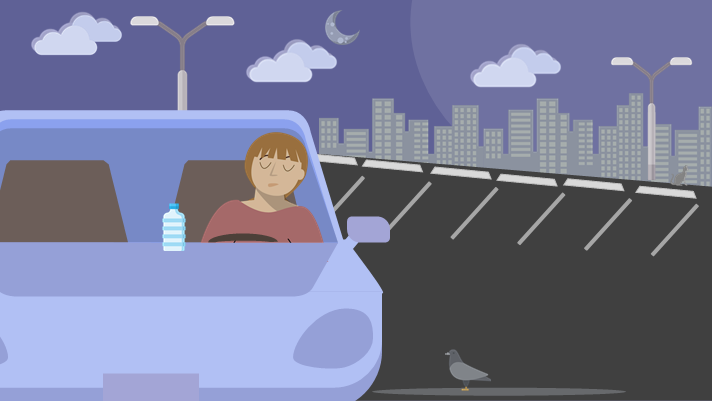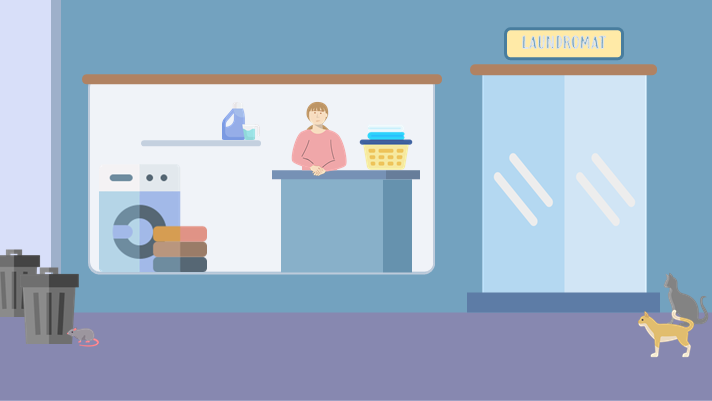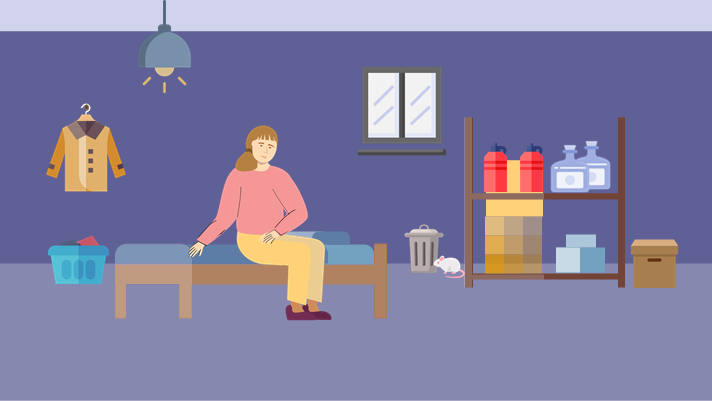Homelessness Among Women and Gender-Diverse People
Story 1: Maeve
In this training, you will explore stories of women and gender-diverse people who are at-risk or experiencing homelessness. These fictional examples are meant to show the root causes of homelessness that are unique for women and gender-diverse people.

Meet Maeve.
Maeve is a cisgender woman is her 40s. After many years of abuse, Maeve left her husband. The VAW shelter helped her find temporary housing. After that, she stayed with a friend for a while.

Sharing a small apartment put a strain on the friendship especially since Maeve couldn’t contribute much to rent. Maeve moved out, but with no place to go, she was forced to sleep in her car while she looked for work.

Maeve got a part-time job working in a laundromat. She works the evening shift and is there most nights by herself. The job doesn’t pay enough for her to afford rent – even a shared apartment, so she sleeps in her car. She visits a drop-in centre for meals and showers to save money.

The owner of the laundromat said he would put a cot in the back room so she can stay there when the weather gets colder. He deducts “rent” from her wages.
Reflection:
How stable is Maeve’s housing situation?
a) Very stable
b) Somewhat stable
c) Not at all stable
Check answer
Answer: Not at all stable.
What can Mae do? Explore some options:
Maeve sleeps in her car through the winter months. She gets pneumonia and can’t work for several weeks.
The VAW shelter turns Maeve away because she is not immediately in danger from abuse. They refer her to the homeless shelter.
The curfew at the homeless shelter is past the time when her shift ends. On nights when she works, Maeve has no option but to sleep in her car.
Bottom line:
Women and gender-diverse people face gender and economic discrimination that limit their ability to access and maintain stable housing.
The gender-wage gap means women are less able to avoid precarious housing or escape violence. Lower-paying jobs, part-time or shift work and child-rearing responsibilities are factors that contribute to experiences of homelessness.
